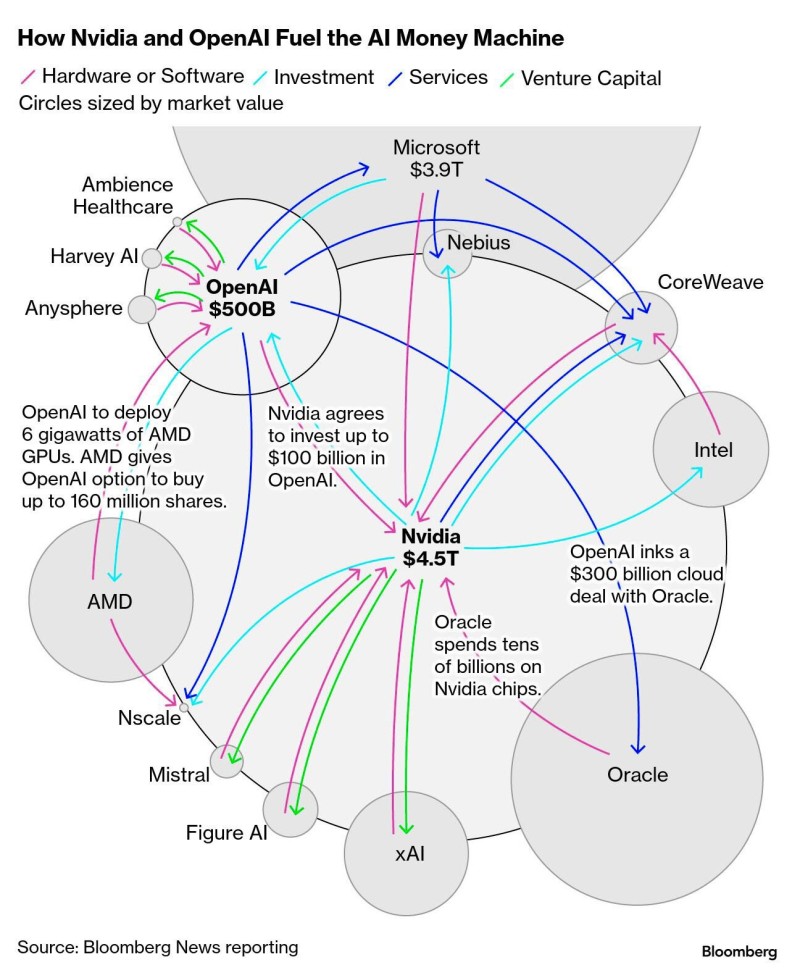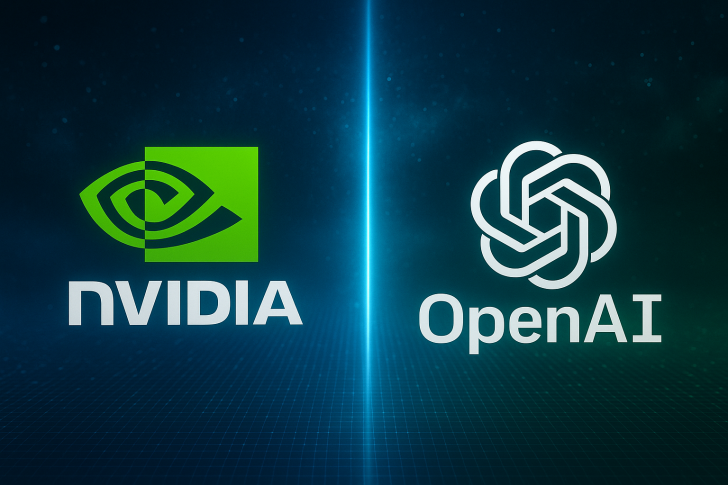Whether you're building a startup, running enterprise AI, or investing in the space, you're probably touching both companies. NVIDIA makes the chips that power AI. OpenAI builds the models that define it. Together, they've become the infrastructure everyone else builds on top of.
NVIDIA: The Engine Room
A recent tweet from Stocktwits captured something many in tech already knew: "One chart to rule the AI world... This is how $NVDA and OpenAI are in the middle of everything." It's not hyperbole.

NVIDIA is the reason modern AI exists at scale. Their GPUs don't just support machine learning, they enable it. Training a large language model without NVIDIA hardware is like trying to cross an ocean without a boat. Most of the breakthrough models we hear about, from OpenAI's GPT to Google's latest experiments, run on NVIDIA chips. Cloud giants like Microsoft Azure, AWS, and Google Cloud stack their data centers with them because customer demand for AI compute keeps climbing. And NVIDIA isn't slowing down. Each new GPU generation delivers massive performance gains, keeping competitors like AMD and Intel playing catch-up.
OpenAI: Making AI Real
OpenAI took AI out of the lab and put it in people's hands. ChatGPT became a cultural moment, not just a product launch. Suddenly, AI wasn't some distant future concept. It was writing emails, debugging code, brainstorming ideas. OpenAI's partnership with Microsoft created a powerful loop: NVIDIA supplies the silicon, Microsoft provides the cloud infrastructure, and OpenAI delivers the smarts. Now millions of users and businesses rely on these tools daily. And with whispers of GPT-5 on the horizon, expectations keep rising.
Here's the reality: nearly every serious AI project today connects back to NVIDIA or OpenAI, often both. Startups train their models on NVIDIA hardware. Companies experiment with OpenAI's APIs. Investors measure AI strategies against these two benchmarks. This concentration brings benefits like faster innovation and industry standards, but it also creates risk. When so much depends on two players, supply chain issues or strategic pivots can ripple across the entire ecosystem.
Innovation is accelerating because these two companies are pushing hard. But their dominance hasn't gone unnoticed. Regulators are starting to ask questions about market concentration. Meanwhile, competitors like Google's Gemini, Anthropic's Claude, and Meta's LLaMA are fighting to diversify the landscape and offer alternatives.
 Usman Salis
Usman Salis

 Usman Salis
Usman Salis


